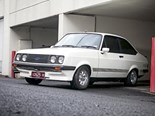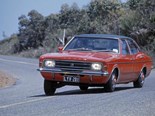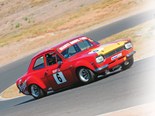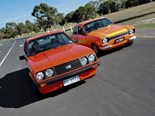Ford Capri review: Great cars of the 70s
 1969 Ford Capri
1969 Ford Capri
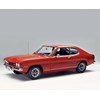
 1978 Ford Capri
1978 Ford Capri

 1978 Ford Capri
1978 Ford Capri

 1969 Ford Capri
1969 Ford Capri

 1974 Ford Capri
1974 Ford Capri
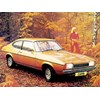
 1969 Ford Capri
1969 Ford Capri

 1972 Ford Capri
1972 Ford Capri

 1972 Ford Capri
1972 Ford Capri

 1972 Ford Capri
1972 Ford Capri

 1972 Ford Capri
1972 Ford Capri

 1972 Ford Capri
1972 Ford Capri


|
|
1969 Ford Capri
|

|
|
1978 Ford Capri
|

|
|
1978 Ford Capri
|

|
|
1969 Ford Capri
|

|
|
1974 Ford Capri
|

|
|
1969 Ford Capri
|

|
|
1972 Ford Capri
|

|
|
1972 Ford Capri
|

|
|
1972 Ford Capri
|

|
|
1972 Ford Capri
|

|
|
1972 Ford Capri
|
It may have started life as a prettier Cortina, but the Capri gained cult status as 'the car you always promised yourself' and it just got better with every passing year
Ford Capri
Three utterly different Fords have carried the name ‘Capri’ but only one carried it off. The 1961 Consul Capri looked better than it went or sold. And Ford Australia’s convertible succeeded neither at home nor in the US market for which it was designed. But the Mustang-inspired coupe which debuted at the Brussels motor show in January 1969 was an immediate success. The advertising campaign branded the new Capri ‘The car you always promised yourself’, which turned out to be a self-fulfilling prophecy for 1,886,647 customers (half a million of ’em in North America) by the time the last one rolled off the line
six days before Christmas 1986.
We think of the Capri as English but more were made in Germany. They were made in Dage Europe’s second Italian model name.
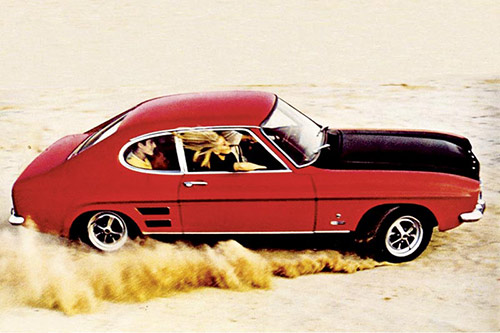
The Capri was half a decade behind the Mustang making it one of the last cars created under Ford’s international Total Performance philosophy. The sixties really did swing for Ford under Henry II and his marketing dynamo Lee Iacocca who conceived ‘Total Performance’. In 1963 he even persuaded Henry to try to buy Ferrari!
Iacocca arrived as Ford general manager in 1960. He lost no time. The first Mustang was a mid-engined marvel revealed on 7 October 1962 at the US Grand Prix. Dan Gurney lapped Watkins Glen just seconds off the pace of the F1 cars.
But focus groups soon revealed that this Mustang was too esoteric to be successful. Iacocca began again, and the rest as they say…
‘Mustang’ became a household word so quickly that one New York diner boasted ‘Our Hotcakes Are Selling Like Mustangs’.
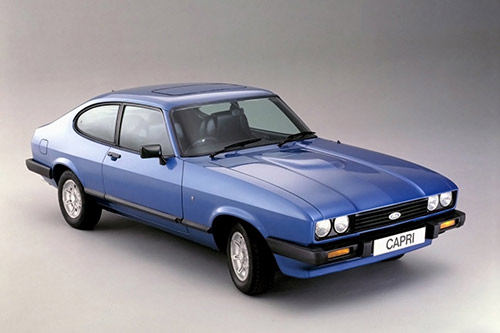
Parallels between the Mustang and the Capri are obvious but arguably the latter was the braver product planning move because what worked in the US did not always translate to Europe. And the Capri really was about Europe not just the UK. Henry Ford II merged his company’s assorted European operations to create Ford of Europe in 1967, the year after his cars had finally triumphed over Ferrari at Le Mans.
In fact, there’s a direct link between the Mustang and the Capri. Phil Clark, an Iowa native who graduated from the Pasadena Art Center College of Design in 1958, designed the Mustang’s galloping-horse logo, unfortunately dying of kidney failure in 1968. In 2010, his daughter released his surviving art folios. Code-named GBX, his drawings and clay models for Project ‘Colt,’ show nearly all the classical Capri hallmarks: the long hood, short rear deck, fastback pillars with notchback rear window and squared-off rear quarter.
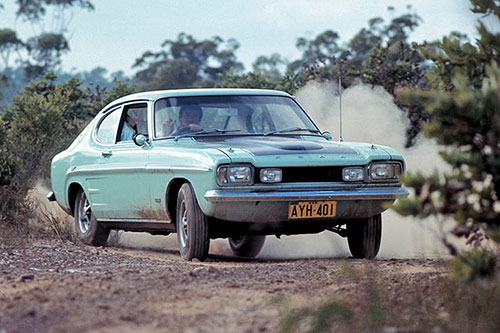
When the Mustang was unleashed on the American public, its extensive range of options packs – and wide choice of engines and transmissions – were hardly new, but European customers had not experienced anything like the Capri’s multifarious offerings. Nor, arguably, had any other comparatively inexpensive vehicle been so sexy, Jaguars excluded. Essentially, Capri was to Cortina as Mustang was to Falcon.
The Capri offers a fascinating contrast with Ford of England’s first ‘Total Performance’ offering, the Lotus Cortina. Ford’s research showed that almost every Capri was sold on looks but the earlier car was more about engineering maximum function into an existing form.
When the Capri was finally ready some two years after Ford’s marketing people would have liked, there was no suitably heroic engine on offer either in Germany or England. In 1968 the Escort Twin Cam was advertised as ‘the Fastest Thing on Ford Wheels’ but early Capris were mostly show ponies. Options opened with the 1.3-litre Taunus V4 and the same-size in-line Kent, the latter inspiring ‘Cortina-in-drag’ denigration by motoring writers.
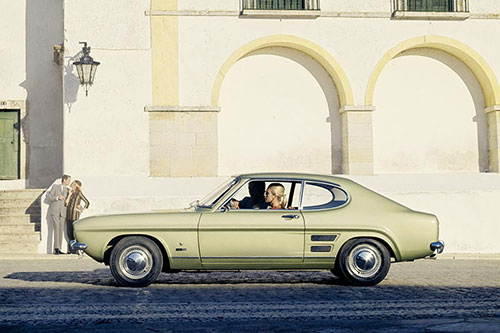
It hit Australia in April 1969 and, blessedly, there was no entry level 1.3 to earn scorn. Both variants were manual 1600s, the Deluxe with 52kW for $2600 and the $2950 GT with 65. They came with a sweet-shifting four-speed manual until automatic transmission hit the options list in 1971.
Starting with the Fiat 125 in the first quarter of 1968, a number of sports sedans and coupes became available at around this time but the Capri was the first coupe in the $3K zone. The Mazda R100 followed in June and the Torana GTR in November.
By the end of 1969 proper sports versions of the Capri were available in Europe and the British 3000 GT with 103kW from its Essex V6 trumped the German 92kW 2300 GT.
Australians bought the 1600 GT in surprising numbers, especially considering it operated in the same price territory as sixpack Torana GTRs and VF Pacers.
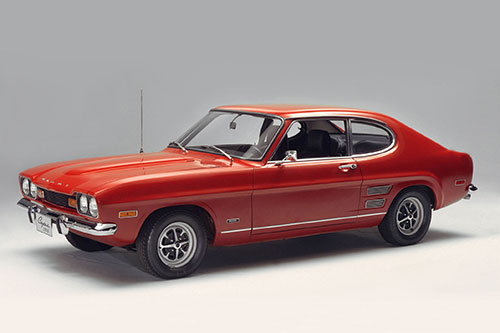
In February 1970 the 3000 GT was introduced here. Assembled in Broadmeadows with 40 per cent local content, it cashed in on the street and track cred of the XW GTHO with the same bonnet locking pins and Super Roo decals, along with British Rostyle pressed steel wheels. The old 1600 GT was renamed GLX. With a V6 beneath its l-o-n-g bonnet, the Capri finally offered performance commensurate with its styling and ambience.
The presence of the Zodiac V6 in the Capri’s vast bay confounded local pundits who had thought the Falcon six might occupy that space. The coming of the Cortina six in 1973 showed the wisdom of the decision to stick with the compact V6; with the long in-line Falcon six up front, the Capri would have been just as dogged an understeerer as the Cortina six and it would be hard indeed to imagine any success at Bathurst.
Even so it was not the best handling car on the road with the narrow-tracked rear end showing some willingness to wag. Leaf springs and standard five-inch rims made a sturdy contribution to such waywardness. At three and a third turns lock to lock on a 10.35m turning circle, the steering was quite low-geared.

At 1070kg the 3000 GT was 155kg heavier (say two adults) than its four-cylinder predecessor but 38 extra kW and double the torque cancelled that penalty two or three times over. It would cover the zero to 100km/h sprint in a little more than 10 seconds on the way to a top speed of 183. Few cars in the price class ($3230) could match its standing 400m time of 16.8 – at least until the XU-1 boomed out its own challenge a few months later.
An extremely youthful James Laing-Peach, writing in the June 1970 edition of Wheels, opined: "Our cryptic summation of the four-banger Capri was –getting to be a motor car rather than just a means of transport. Feel assured the Capri V6 has gone the whole way – it is a real motor car."
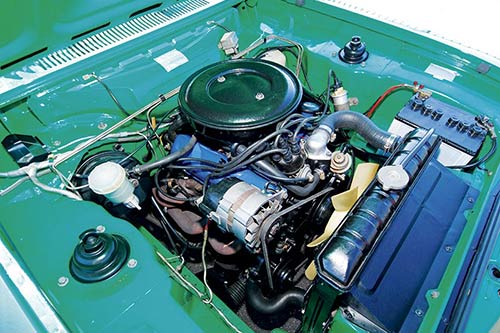
The 3000 GT was a more refined machine – Super Roo decals and bonnet pins notwithstanding – than a Torana GTR or XU-1 and essentially claimed its own niche in the market. I knew a bloke who had bought a brand new dark green one and, at 20, I thought it was totally cool: by contrast the GTR just seemed gauche and garish.
While Ford Australia’s plastering Super Roo decals on the HO, the 3000 GT and even the Escort GT, might have seemed excessive, at least this heavyweight marketing served to emphasise the company’s broad range of performance variants: Total Performance arriving nearly a decade late Downunder, if you like.
In 1971 the lusty Pinto 2.0 replaced the old Essex 1.6 and the 3000 GT’s bonnet pins were recessed for less of the boy-racer look. More than 12,000 were sold in Australia before it was discontinued in April 1973. The ‘Diana’ Mark 2 (with hatchback) was introduced in Europe in February 1974 (after more than a million original Capris had been sold).
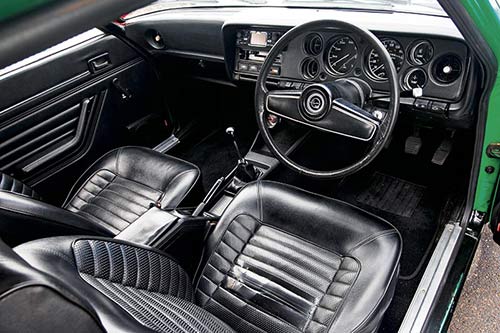
Project ‘Carla’ brought the final revision, known unofficially as the ‘Mark 3’ Capri. A longer nose with quad headlights brought a lower coefficient of drag. The special Cologne-built 280 Brooklands limited edition celebrated an end to the Capri. But the planned 500 units grew to 1038. All were Brooklands Green with black leather and equipped with the Cologne 2.8-litre injected V6 which made 160 horsepower and ran through a five-speed gearbox and limited slip differential. There was power rack and pinion steering. The 280 reached 100km/h in 7.8 seconds and a top speed of 210. Unlike so many other classic cars, the Capri finished on a high note.
SPECIFICATIONS
1968-1973 Ford Capri 1600 Deluxe/1600 GT/3000GT
Body: 2-door coupe
Engine: 1598cc in-line 4/1598cc in-line 4/2994cc V6
Power: 52kW @5000rpm/65kW@5400rpm/103kW@4750rpm
Torque: 124Nm@2500rpm/130@3600rpm/261@3000rpm
Transmission: 4-speed manual, 3-speed auto (optional from 1971)
Suspension: MacPherson struts/locating link/anti-roll bar (f), semi-elliptic springs/radius arms (r)
Brakes: discs (f), drums (r)
Weight: 915kg/920/1070 (kerb)
0-100km/h: 16.2/14.6/9.5sec
Top speed: 148/160/183km/h
Price: $2630/$2950/$3230 (plus on-road costs)
Unique Cars magazine Value Guides
Sell your car for free right here
Get your monthly fix of news, reviews and stories on the greatest cars and minds in the automotive world.
Subscribe

.jpg)












